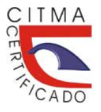Estudio comparativo para determinar método de plantación de caoba en condiciones de primero de enero
DOI:
https://doi.org/10.5281/zenodo.11493553Palabras clave:
Plátano, Policultivo, Siembra de caobaResumen
Los sistemas agroforestales brindan alternativas que contribuyen al desarrollo socioeconómico, recuperación, conservación de los recursos naturales y el ambiente; por lo que se otorga importancia científico técnica a estos sistemas. El presente trabajo se desarrolló en áreas de la CCS Alberto Más, donde se realizó un experimento a nivel de producción con tres tratamientos, un policultivo de caoba con plátano, un monocultivo de caoba y otro de plátano, con el fin de realizar un estudio comparativo para determinar un método de plantación de caoba efectivo en las condiciones del municipio Primero de Enero. Para realizar las evaluaciones se tomaron 6 puntos distribuidos en diagonal en cada uno de los tratamientos despreciando 10 m de borde, determinándose para la caoba altura, diámetro del tallo, número de ramas y ritmo de crecimiento; y para el plátano altura, diámetro del seudotallo y rendimiento por planta. El procesamiento de los datos fue realizado mediante el utilitario estadístico SPSS, realizándose anova de un factor y prueba de Duncan para las medias en estudio de los parámetros evaluados, determinándose la significación. Se determinó para al análisis económico el ingreso, costo por unidad, costo por peso, utilidad y rentabilidad. Los resultados de las evaluaciones en el policultivo fueron superiores a los del monocultivo en el caso de la caoba, no comportándose así en el plátano donde no existieron diferencias significativas. Se determinó que el método de plantación de caoba más efectivo de los tratados, para las condiciones del municipio es el policultivo de caoba con plátano.
Descargas
Citas
ALFONSO, D. y SÁNCHEZ, E. O. (2006). Evaluación de la extracción de caoba del Atlántico en la comunidad de El Guayabo, departamento de Colón, Honduras. Zamorano, Honduras. Disponible en: http://www.google.com/zamo-oti-02.zamorano.edu/tesis_infolib/2006/T2329 Visitado: 21 de enero de 2023.
BETANCOURT, A. (2000). Árboles maderables exóticos en Cuba. La Habana: Editorial científico - técnico.
BONILLA, M. (2006). Principales especies empleadas en la reforestación. Material complementario. Ciudad de La Habana: Editorial Pueblo y Educación.
CARRAZANA Toledo, M. … [et al.] (1983). Fundamentos económicos de la producción agropecuaria. Ciudad de La Habana: Editorial Pueblo y Educación.
DAWKINS, H. C. (1955). The volume increment of natural tropical high forest and the limitations on its improvement. Proc. 2nd Conf. For. Interafric., Pointe-Noire.
FORS y REYES, A. (1967). Manual de selvicultura IV Edición. La Habana: Instituto nacional de desarrollo y aprovechamiento forestal.
IVANOV, Z. (1985). La experimentación Agrícola. La Habana: Ed. Pueblo y Educación.
KING, K.F.S. (1976). Agrosilvicultura (The Taungya System) Nigeria: Ibadan. Department of Forestry University.
LAMB, F.B. (1966). Mahogany of tropical America: its ecology management. Ann Arbor, MI: The University of Michigan Press.
MALDONADO MARES, F. (2006). Dinámica de materia orgánica, P y K en suelos de sistemas agroforestales “cedro-plátano” en Tabasco México. Revista Fitotecnia Mexicana Sociedad Mexicana de Fitogenética, A.C. México. Disponible en: http://redalyc.uaemex.mx/redalyc/html/610/61029306/61029306.html. Visitado: 25 de diciembre de 2022.
MINAGRI (2004). Instructivo técnico del cultivo del plátano. La Habana: Editorial MINAGRI.
Publicado
Versiones
- 25-09-2023 (2)
- 26-09-2023 (1)
Cómo citar
Número
Sección
Licencia
Derechos de autor 2023 Universidad & ciencia

Esta obra está bajo una licencia internacional Creative Commons Atribución-NoComercial-CompartirIgual 4.0.





















